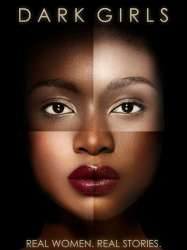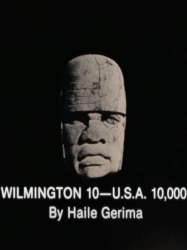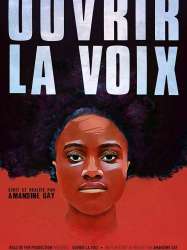Derrière les fronts : Résistances et résiliences en Palestine is a french film of genre Documentary
Derrière les fronts : Résistances et résiliences en Palestine (2017)

If you like this film, let us know!
- Infos
- Casting
- Technical infos
- Photos
- Videos
- Film quotes
- Characters
- Music
- Awards
Derrière les fronts : résistances et résiliences en Palestine est un film documentaire français réalisé par Alexandra Dols, tourné en Palestine et sorti en salles en 2017.
Trailer of Derrière les fronts : Résistances et résiliences en Palestine
Bluray, DVD
Streaming / VOD
Comments
Leave comment :
Suggestions of similar film to Derrière les fronts : Résistances et résiliences en Palestine
There are 8972 with the same cinematographic genres, 572 films with the same themes (including 260 films with the same 2 themes than Derrière les fronts : Résistances et résiliences en Palestine), to have finally 70 suggestions of similar films.If you liked Derrière les fronts : Résistances et résiliences en Palestine, you will probably like those similar films :
 , 55minutes
, 55minutesGenres Biography, Documentary
Themes Films about racism, Films about religion, Documentary films about racism, Documentary films about law, Documentary films about war, Documentary films about historical events, Documentaire sur une personnalité, Documentary films about religion, Political films, Films about Jews and Judaism, Documentary films about World War II

Rwanda pour mémoire (2003)
, 1h8Directed by Samba Félix Ndiaye
Origin France
Genres Documentary
Themes Films set in Africa, Films about writers, Films about racism, Documentary films about racism, Documentary films about law, Documentary films about war, Documentary films about historical events, Documentaire sur une personnalité, Documentary films about politics, Political films
In 1994, between April and July, the massacre of Tutsis and moderate Hutus left one million dead. Instigated by Fest’Africa, a dozen African authors met four years after the events as writers in residence at Kigali, to try to break the silence of African intellectuals on this genocide.

Mandela (1996)
, 1h58Genres Documentary, Historical
Themes Films set in Africa, Films about racism, Documentary films about racism, Documentary films about law, Documentaire sur une personnalité, Documentary films about politics, Political films
Rating69%





The documentary is the official film biography of Nelson Mandela, the first democratically elected president of the ethnically united South Africa. The film touches on Nelson Mandela's childhood, family, education, and his long struggle to gain freedom for all the various ethnic groups in South Africa, including his experiences on the Robben Island prison.

Dark Girls (2011)
Directed by Bill Duke
Origin USA
Genres Documentary
Themes Films about racism, Documentary films about racism, Documentary films about law, Documentaire sur une personnalité
Rating75%






Meeting David Wilson (2008)
Genres Documentary
Themes Films about slavery, Films about racism, Documentary films about racism, Documentary films about law, Documentary films about historical events, Documentaire sur une personnalité
Rating75%






The Slanted Screen (2006)
Genres Documentary
Themes Films about racism, Documentary films about business, Documentary films about the film industry, Documentary films about racism, Documentary films about law, Documentaire sur une personnalité
Actors Frankie Chan, Kelvin Han Yee, Bobby Lee, Jason Scott Lee, Will Yun Lee, Tzi Ma
Rating71%






Umurage (2002)
, 52minutesOrigin Espagne
Genres Documentary
Themes Films set in Africa, Films about racism, Documentary films about racism, Documentary films about law, Documentary films about war, Documentary films about historical events, Documentaire sur une personnalité, Documentary films about politics, Political films
In Rwanda, a hundred members of the Ukuri Kuganze Association, made up in its majority by survivors of the genocide, and a few of their executioners, freed after having confessed and asked for forgiveness in 2003, meet at a reinsertion center. These executioners are going home, in most cases to the same places where they carried out their crimes, and will have to "face" their victims and ask their forgiveness. In 1994, over a space of just one hundred days, almost a million people were murdered, that makes 10,000 dead per day.

Directed by Hailé Gerima
Origin USA
Genres Documentary
Themes Films about racism, Documentary films about racism, Documentary films about law, Documentary films about historical events, Documentaire sur une personnalité
1978's Wilmington 10—USA 10,000 examined the impact of racism and the short-comings of the criminal justice system by examining the history of the nine black men and one white woman who became known as the "Wilmington Ten."

Portrecista (2005)
, 52minutesGenres Documentary
Themes Films about racism, Films about religion, Documentary films about the visual arts, Documentary films about racism, Documentary films about law, Documentary films about war, Documentary films about historical events, Documentaire sur une personnalité, Documentary films about religion, Political films, Films about Jews and Judaism, Documentary films about World War II
Rating78%





Portrecista (The Portraitist) examines the life and work of Wilhelm Brasse, who had been trained as a portrait photographer at his aunt's studio prior to World War II and passionately loved taking photographs. After his capture and imprisonment by the Nazis at Auschwitz concentration camp in 1940, at the age of 23, he was forced to take "identity pictures" of between approximately 40,000 to 50,000 other inmates between 1940 and 1945. With "courage and skill", documenting "cruelty which goes beyond all words ... for future generations", after his liberation at the end of World War II, Brasse "could not continue with his profession" and would never take another photograph.

Speak Up (2017)
, 2h2Directed by Amandine Gay
Origin France
Genres Documentary
Themes Feminist films, Politique, Films about racism, Documentary films about racism, Political films
Actors Sabine Pakora
Rating72%





Le documentaire filme, sans voix off, 24 femmes noires issues de l'histoire coloniale européenne en Afrique et aux Antilles. Il traite de leur expérience de la différence en tant que femme noire et des clichés qui leur sont associés en tant que « femme » et « noire » dans une optique à l'intersection des différentes discriminations.
 Connection
Connection